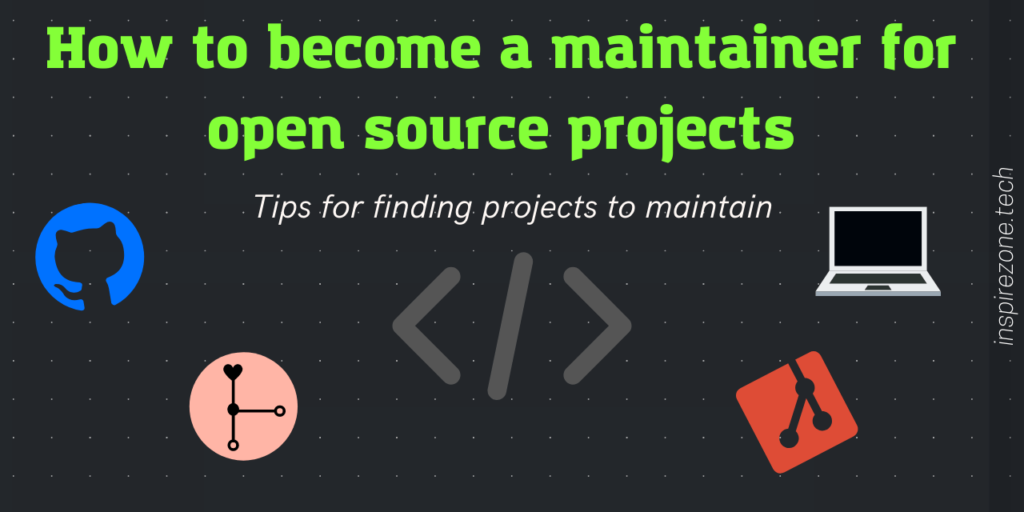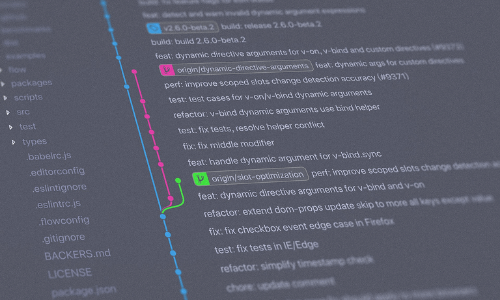
Open source refers to projects publicly accessible that anyone can view, modify and distribute. A key factor of open source projects is that anyone is also able to make contributions to the project.
There are many ways of finding open source projects you can contribute to. GitHub is a popular platform used for hosting open source repositories and possesses powerful search features to help in finding open source projects that interest you and are suited to your skill level.
While getting involved in the open source community as a contributor is one approach, we must also remember maintainers are necessary to keep those repositories in order!
Consider finding open source projects you can become an active maintainer of. Due to the varied nature of the roles and responsibilities required, getting involved in open source as a maintainer is a unique method of accelerating your growth as a programmer.
Okay, you’re now considering starting your journey as a maintainer, but how do go about finding open source projects to maintain?
We’ll cover 3 simple and very do-able options to achieve this (with one bonus tip at the end!)
Option 1: Finding open source projects you are passionate about and eventually become a maintainer

This involves taking the time to discover and get involved with one or several open source projects, enjoy working with those projects, then eventually take advantage of any opportunity that arises to become a maintainer.
As a starting point, this guide from GitHub on finding open source projects can be used to begin this search.
Finding open source projects you’re passionate about is crucial as your passion for the project will naturally allow you to become deeply involved and learn more about the project.
Find ways to contribute and be actively involved with the community for the project. This can be done by submitting code contributions, making suggestions, asking helpful questions, taking on documentation tasks and much more.
Over time and depending on how much you contribute and are active in the project, you’ll acquire enough knowledge to eventually be able to take on a maintainer role. It’s also ideal to spend some time learning about the project and contributing to build up enough reputation within the project’s community.
Also pay attention to getting involved within the community of the project. For example, if the project code base is maintained on GitHub, they may have groups on platforms like Slack or Discord that would be ideal to become a part of so you can be even more involved in the project and interact with other people involved.
Also consider reaching out to the maintainers of projects you’re interested in and asking if you can help out. If you’ve shown yourself to be active in their community or a valuable contributor, such a request would be greatly appreciated!
Admittedly, this won’t always work out and may take quite some time to gain trust in becoming a maintainer for a project that you weren’t involved with from the start. But at some point, projects will be looking for maintainers to take on the driving seat as maintainers tend to come and go.
The options that follow will provide you with full control that will guarantee you as a maintainer.
Option 2: Make your own open source project

This may sound obvious but perhaps not many realise you are easily able to make your own open source projects!
Any repository can become an open source project by simply making it public and making it known that you accept contributors.
There are numerous guides that will take you through how to go about setting up an open source repository. A good resource is this guide to starting an open source project. GitHub also has some tips on how to interact with people involved with repositories hosted on the platform.
We also recommend reading our own essential checklist for every open source repository maintainer. This will take you through a list of suggested minimum items and configurations needed to make an open source project on GitHub.
While setting up an open source project is one aspect of launching your maintenance journey, by going this route you’ll need a project idea first. This is where you’ll have to put up the work and find ideas or go through brainstorming sessions to come up with a project you would like to work on and maintain.
Important! Make sure the project you decide to start as an open source project is one you’ll be genuinely interested in.
The advice is not to make the project something generic you’re likely to lose interest in, but on something you’ll be genuinely interested in seeing through and sticking around to reach milestones.
Taking the time to come up with an idea for a project you’ll have interest in will increase your motivation and investment into the project.
Option 3: Take an existing project and make it contribution-friendly

Is there a project you’ve abandoned and never completed?
Is there a project you’re working on but struggling to get it to the next milestone?
Is your organization working on a closed-source project that may benefit from exposure to the open source community for an injection of innovation?
Consider taking such projects and revamping them as open source projects that welcomes contributions from other developers!
Two heads are better than one! Now image 5, 10, 100 or even 1000 heads all contributing, solving and suggesting ideas for your project.
The idea of taking an existing project and turning it into open source has been adopted by organizations. The realisation of the power of the open source community and how it can help a project should not be ignored by companies aiming to develop world-class software that satisfies the needs of its end users.
Improved security and faster development cycles are just some of the advantages organizations will have by opening up open source projects. See this Linkedin article for a deeper look as to why more organizations invest in open source
Similar advantages seen by organizations involved in open source can also be seen for individuals. Turning your existing projects and making them publicly accessible opens up your project to ideas, improvements and potential accelerated development.
Making a project open source does not mean you lose control over it. Becoming the maintainer of the project still provides some control over how the project progresses. You have the choice of which contributions you want to accept or reject.
Your visions and goals for the project can be communicated to the public in files like the CONTRIBUTING.md. This is a file typically found on open source repositories outlining the criteria, rules and guidelines for anyone who wants to get involved in the project.
So why not take a look at your backlog of abandoned projects, on-going projects or start-up ideas and turn them into open source projects? You never know what could result when you open up your ideas to the open source community!
Bonus Tip: Take advantage of open source events and hackathons

This is an extra tip that involves keeping an eye for events related to open source and using the opportunity to promote your projects.
For example, Hacktoberfest which runs every year in the month of October is an increasingly popular event that encourages developers to make contributions to open source repositories and potentially win prizes.
The 2021 Hacktoberfest saw 294,451 pull requests accepted or merged for the event. This gives an idea of the scale of such an event and highlights the importance of taking advantage of such an event to promote your projects.
Other hackathons also run throughout the year. Having a presence on developer communities like DEV.to, Hackernoon and Hashnode is one method of staying in touch with events going on in the software development world.
Being aware of such events and becoming accustomed to promoting your projects is necessary for providing exposure to projects you maintain, attracting contributions and expanding the reach of your projects.
Conclusion
If you’re involved in open source as a contributor, consider taking things a step further by finding open source projects you can maintain yourself or with other maintainers!
Any of the tips provided in this article can be used to kick-start your open source maintaining journey and take on the challenges involved with maintaining projects.
Taking the leap from contributor to maintainer might suit those who have at least some basic experience contributing to existing repositories and are curious to know what it’s like on the maintainer side.
If you’re new to open source consider reading: A beginner friendly guide to making your first open source contribution.
Also consider reading the following post that complements this one on all the benefits of becoming a maintainer: 5 Compelling reasons to become an open source maintainer and accelerate your growth as a programmer 🚀.
Finally, if you’re ready to launch into open source maintenance make sure to check out: The essential checklist for every open source repository maintainer.
Checkout other articles you may be interesting in:

